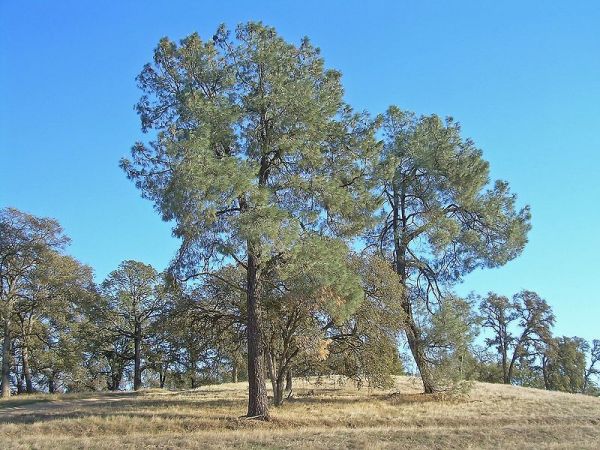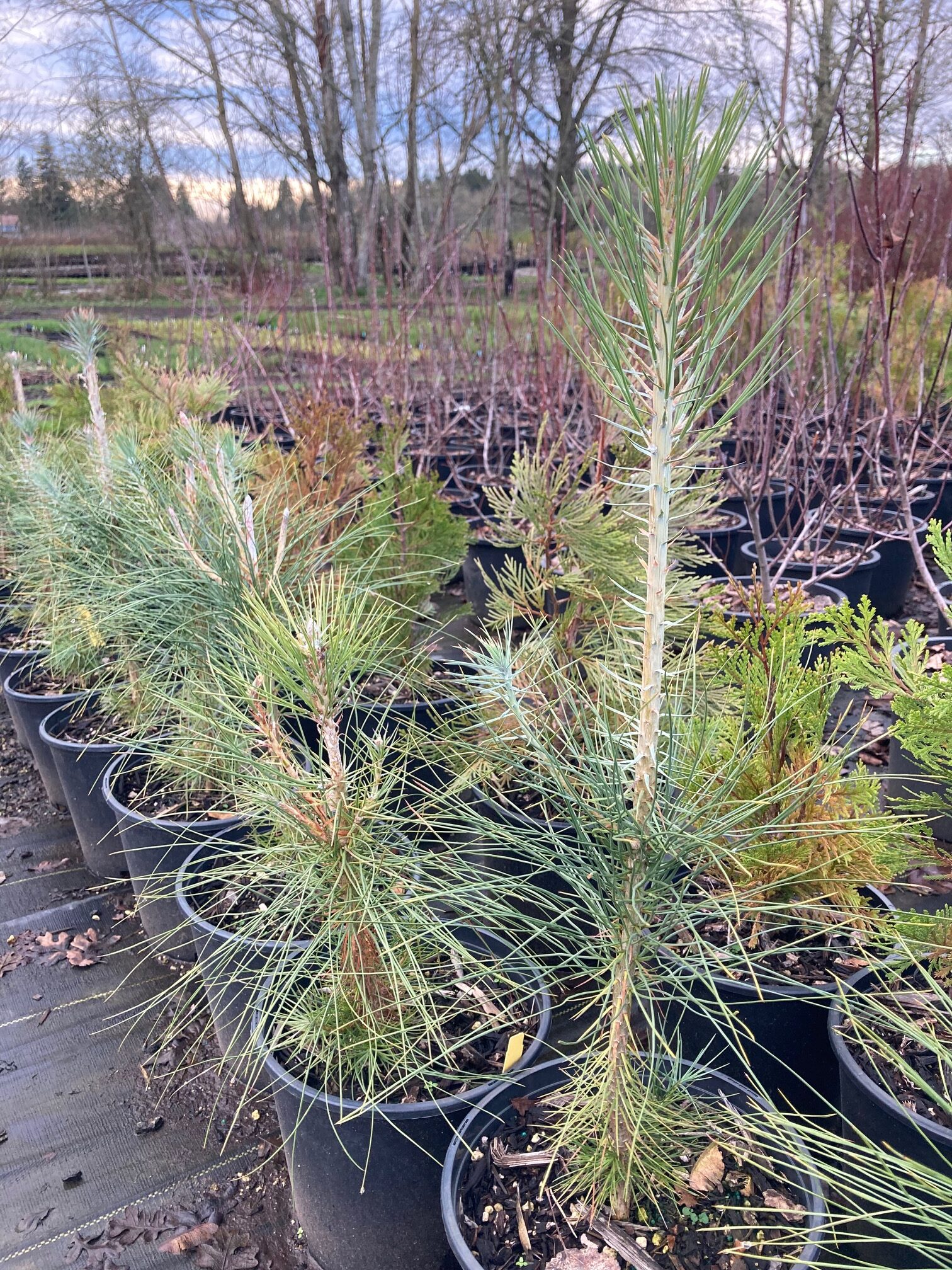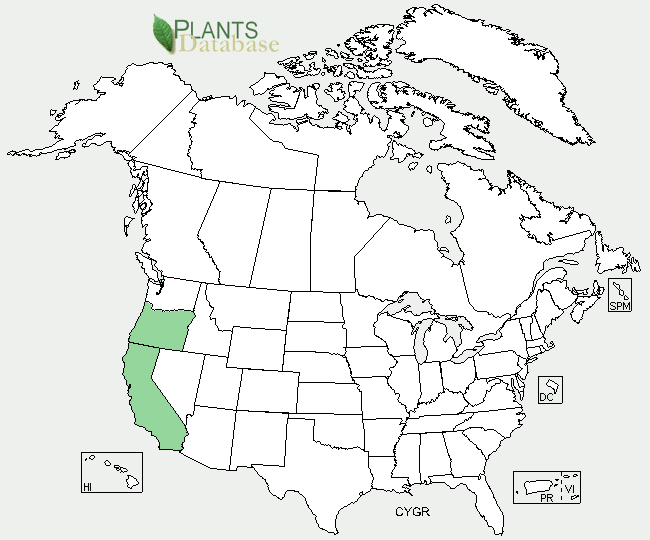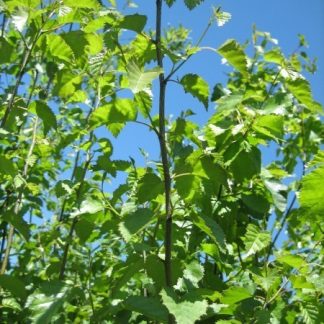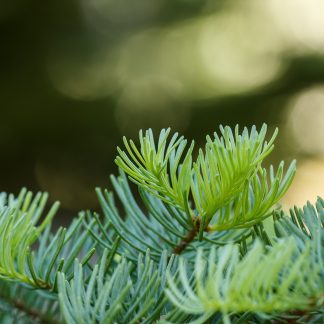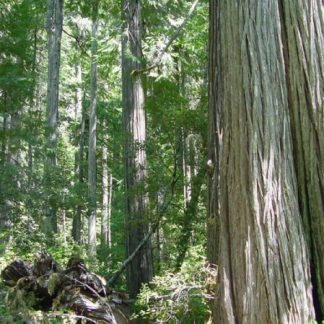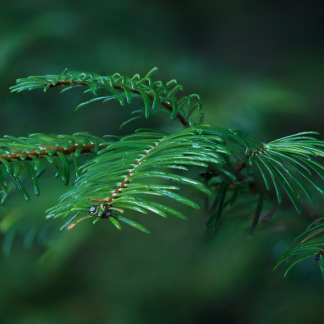Pinus sabiniana
foothill pine
Habit: An endemic evergreen species with an interesting irregular to round silhouette, growing up to 100 feet, most likely 40 to 80 feet in a garden. Pinus sabiniana has a forking trunk and sparse, airy foliage that casts attractive shadows on the ground and walls. Its bark has deep reddish-brown furrows, with dark gray ridges. The trunk surface is very flaky when young, but grows more solid with time. The silver or olive gray needles are 6 to 12 inches long, and arranged loosely, 3 to a bundle. Brown, massive seed cones with a pointed tip can grow as large as 10 inches and are composed of thick, sharp scales with claw-like tips.
Ecology: found often in dry slopes in open woodlands, along with blue oak and California buckeye. It also inhabits river valleys, foothills and mixed chaparral, mostly in lower elevations from sea level to 3,000 feet. However it can be found as high as 7,000 feet. Foothill pine is native from Southeastern Oregon and throughout most of California, except desert, northern coastal, or alpine ecosystems.
Growing conditions: enjoys full sun and a variety of soils, preferably well-drained soils. Pinus sabiniana is heat and drought-tolerant. It is recommended as a specimen tree for the garden, and also for public parks and roadside plantings, provided there isn’t a lot of pedestrian traffic in the area. This is due to the hazard of falling pine cones.
This species produces edible nuts, rich in protein and fat, which are still harvested annually by Native American tribes of California. Pinus sabiniana is known by different common names, more notoriously as “digger pine” because the tree was used extensively by indigenous people, colloquially referred to as “diggers”. This name, however, is considered derogatory by representatives of the native tribes. A better descriptive name is “ghost pine” due to the tree’s sparse branches and gray foliage that appears faint and blurry above neighboring forest pines.
Specs
Evergreen tree
20-100 feet (6 to 30 m)
20-40 feet (6 to 12
7b to 11a

